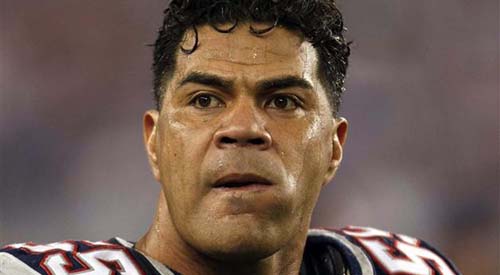
The silly little idea that could happen
Time heals all wounds but after almost a month, Junior Seau’s suicide stings just as much as when it was first announced. It’s too bad, and sad, that he felt like he had no other solutions than to take his own life.
I didn’t know him, but it was heartbreaking to see his mother burst into tears in front of reporters, just as it was to listen to Marcelus Whiley, a former teammate, do the same on the radio. Seau was an incredible football player over his 20-year career but all signs point to him being a quality man off the field as well – and truly, this is what matters most.
Is football in the middle of a crisis that could kill the sport? Bear with me for just a minute – don’t laugh yet.
On the one hand, it is true that football, and the NFL especially, has never been as popular. Financially, the league has no equals in North America and manages to turn any pseudo-event (read: the Combine, the Draft) into a media circus that is popular with its fans. Most of the stadiums are filled to capacity every Sunday while the level of play on the field is as good as it’s ever been. And everyone loves this.
Not only that, but college football is probably the second favorite sport of many Americans. The influence of football on the North American sports scene is very real – for most, football comes first, way before everything else. Once again, no complaints.
[php snippet=1]
Yet, not all is well in the wonderful world of professional football. Just as the NFL is healthier than it has ever been, this has come at the expense of many of its retirees, who are dropping like flies. Before Seau, it was Ray Easterling on April 19, 2012, and before him it was Dave Duerson on Feb. 17, 2011. That makes it three suicides in about 16 months, which is unacceptable.
Should we prep for football’s eulogy? Admittedly, this would be a drastic solution to a trend that, though growing, remains mysterious at most.
As long as football stays this prosperous financially, it will not go anywhere. It’s more likely that fans will see some quick fix solutions (such as making padding around the thighs and knees mandatory in 2013) before they see any lasting and radical changes. Plus, elite football players – the ones who play in college or professionally – are adults at least 18 years of age. They have made a conscious and informed decision to play football and recognize the high risks of injuries that come with it, but have still decided to play for a variety of reasons, among which because seemingly everyone loves watching them play.
Could this trend be starting to change? Will the NFL stay this popular forever and ever?
Personally, I love football, the NFL and the NCAA. Chances are that if you are reading this, you probably do too. However, the more I learn about the long-term effects of playing football on the human body, I find it harder and harder to continue supporting the league. Worse still, there remains a lack of data and knowledge on the exact consequences of playing football, a sport that increasingly seems to leave players crippled and distraught.
That said, it is impossible to say with certainty what caused, or not, the death of Seau, Easterling and Duerson. It is probable that depression played a role but again, but this quickly becomes a guessing game as to what caused this depression in the first place. Not everyone who battles depression will decide to kill him or herself, far from it, and football players are not at greater risk of developing depression with suicidal thoughts than another group.
Then again, they appear at greater risk of developing traumatic encephalopathy, which attacks the brain as a product of numerous and recurring blows to the head. Concussions are bad news for professional athletes, but apparently so are repetitive strikes to the head – and we’re only now beginning to understand the extent of this.
Several retired NFL players need help and NFL Commissioner Roger Goodell absolutely must step up. (If I’m not enough to convince him, or you, then listen to someone like Brandon Marshall, as he has a keen understanding of this problem.)
The catch-22 is that you can only change football so much to make it safer for the players. At some point, changes alter the essence of the sport and when that happens, we have something like the Pro Bowl on our hands. And no one wants that.
There is an inherent risk that comes with playing football and though it can be minimized, it can’t be erased. Rather, what needs to change is how much the NFL helps (or doesn’t) its ex-players once they are retired.
You could argue that at least, professional players are compensated for the risks they withstand and the injuries they sustain. Where football is difficult to accept is when the risks and injuries are withstood and sustained by high school players from across Canada and the United States who, by the way, “will be going pro in something other than sports” as the NCAA likes to remind us.
For a while, my plan was for my unborn son to be the next Jerry Rice, Champ Bailey or even Mike Vanderjagt, but this has changed. More and more, I’m thinking like Kurt Warner and Tom Brady Sr., and I don’t think I’d let my son play football. It’s not worth it. Instead, he’ll probably be the next Adam Dunn or Justin Morneau – and he’ll make more money there anyway.
[php snippet=1] http://credit-n.ru/zaymyi-next.html http://credit-n.ru/zaymyi-next.html https://zp-pdl.com/emergency-payday-loans.php

